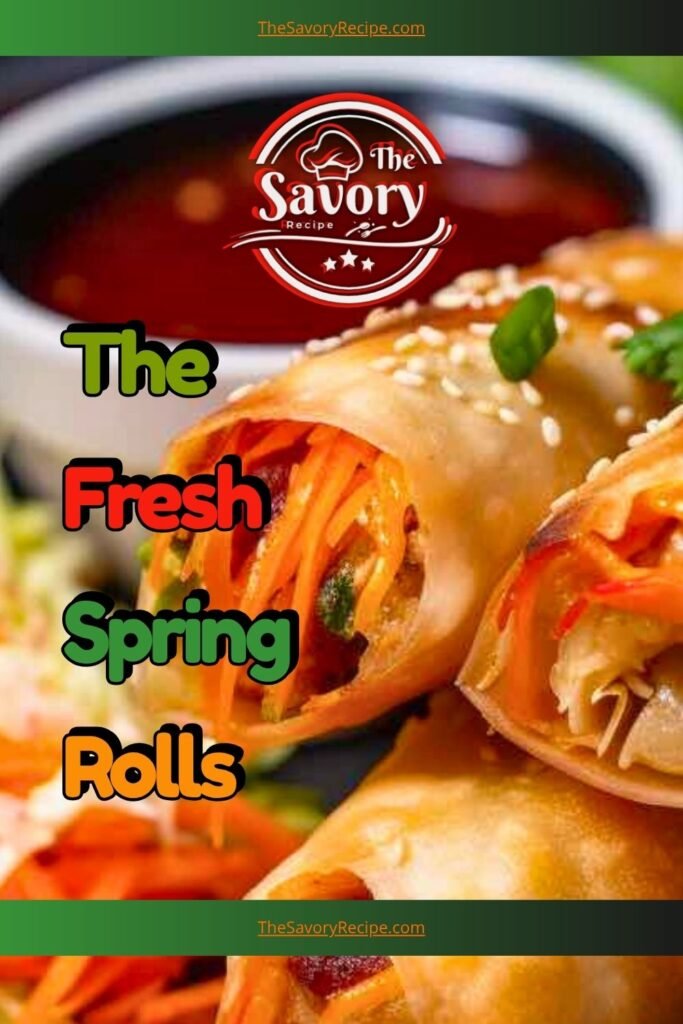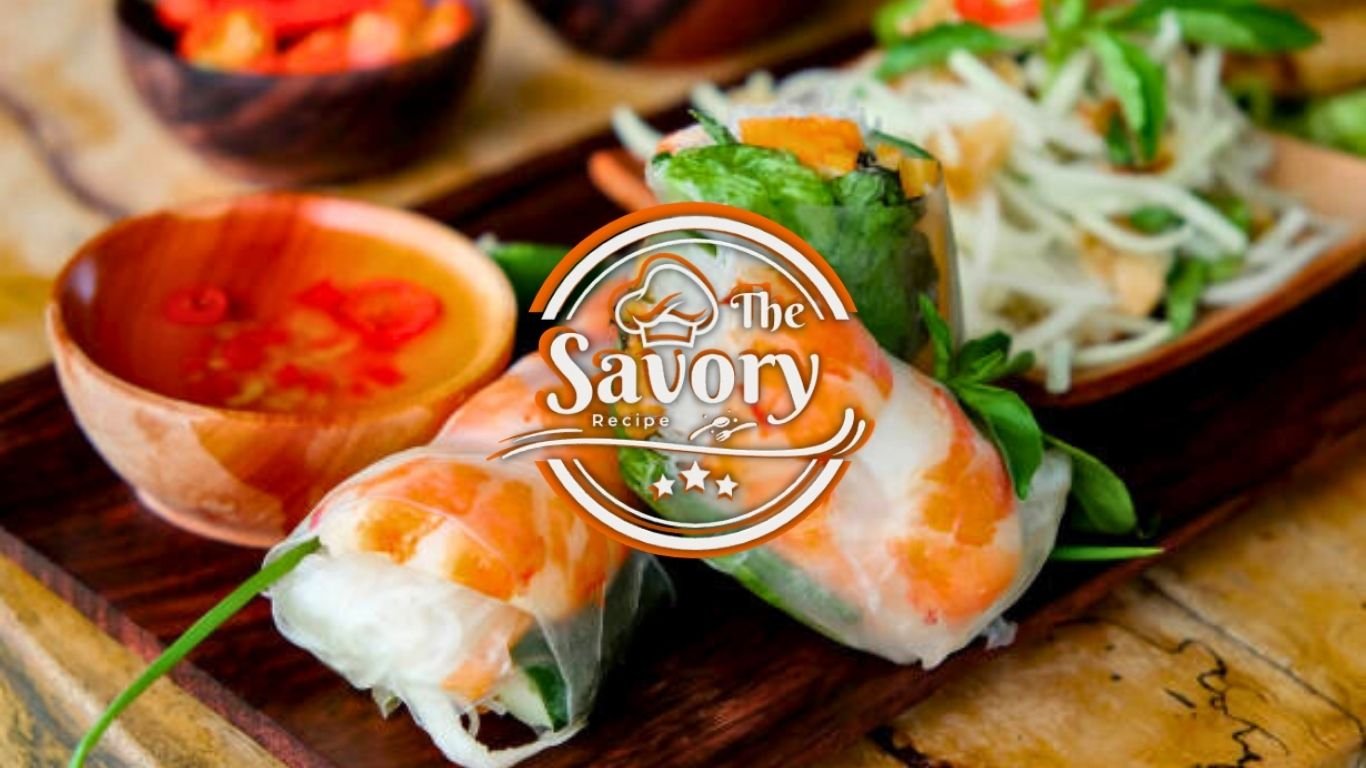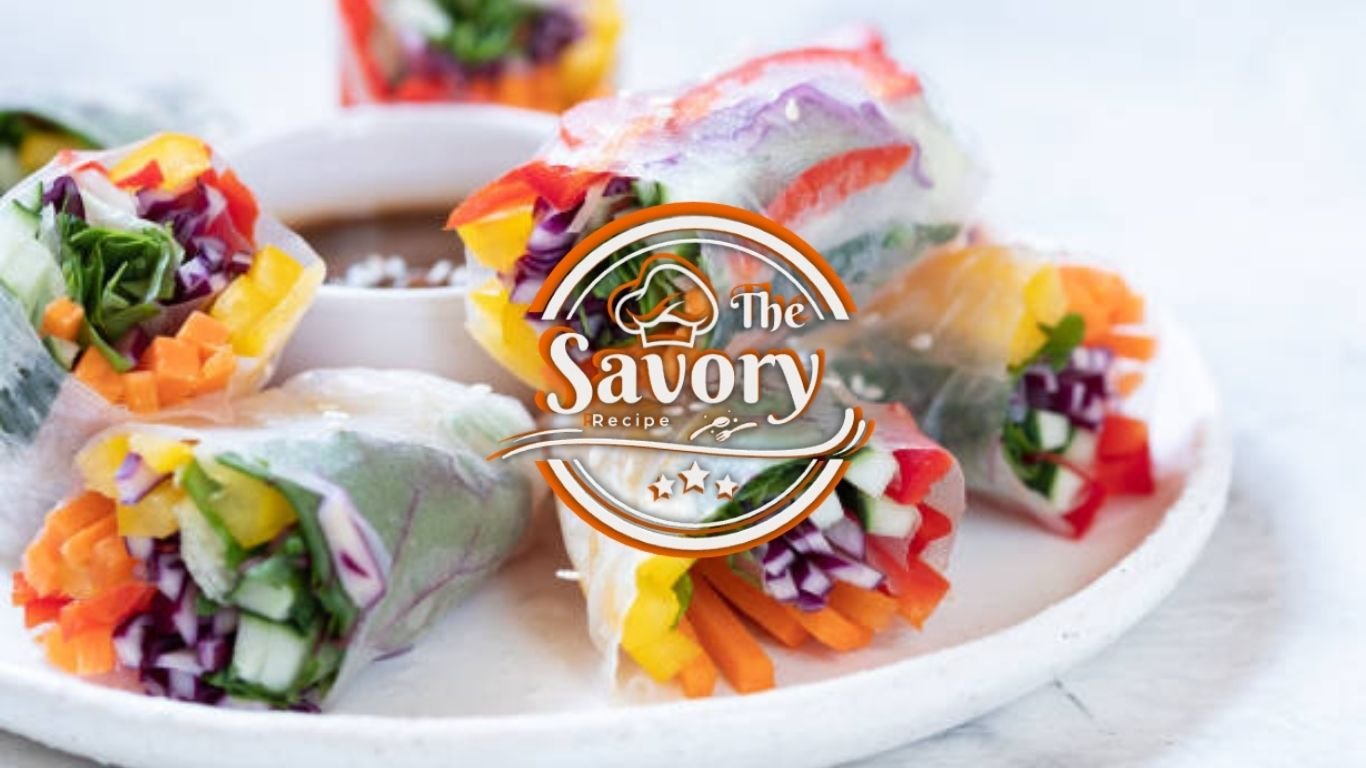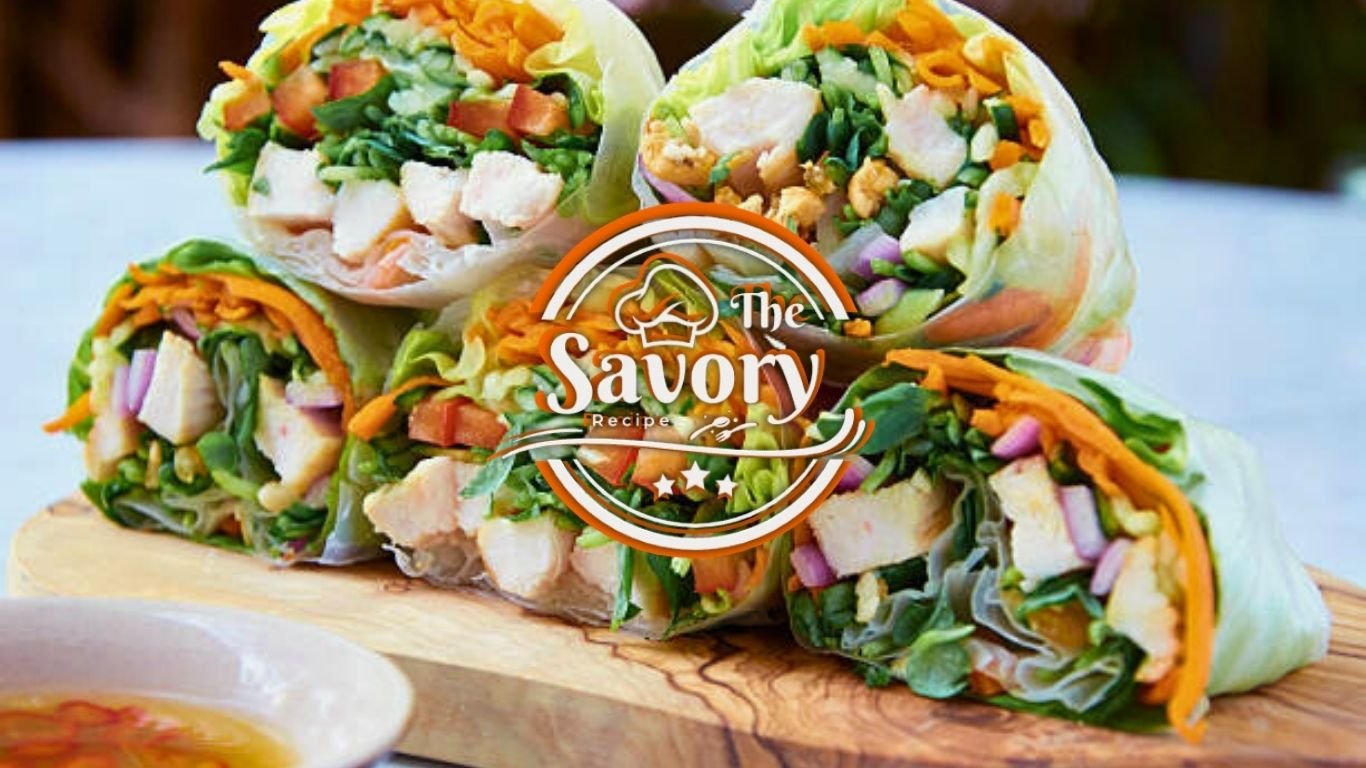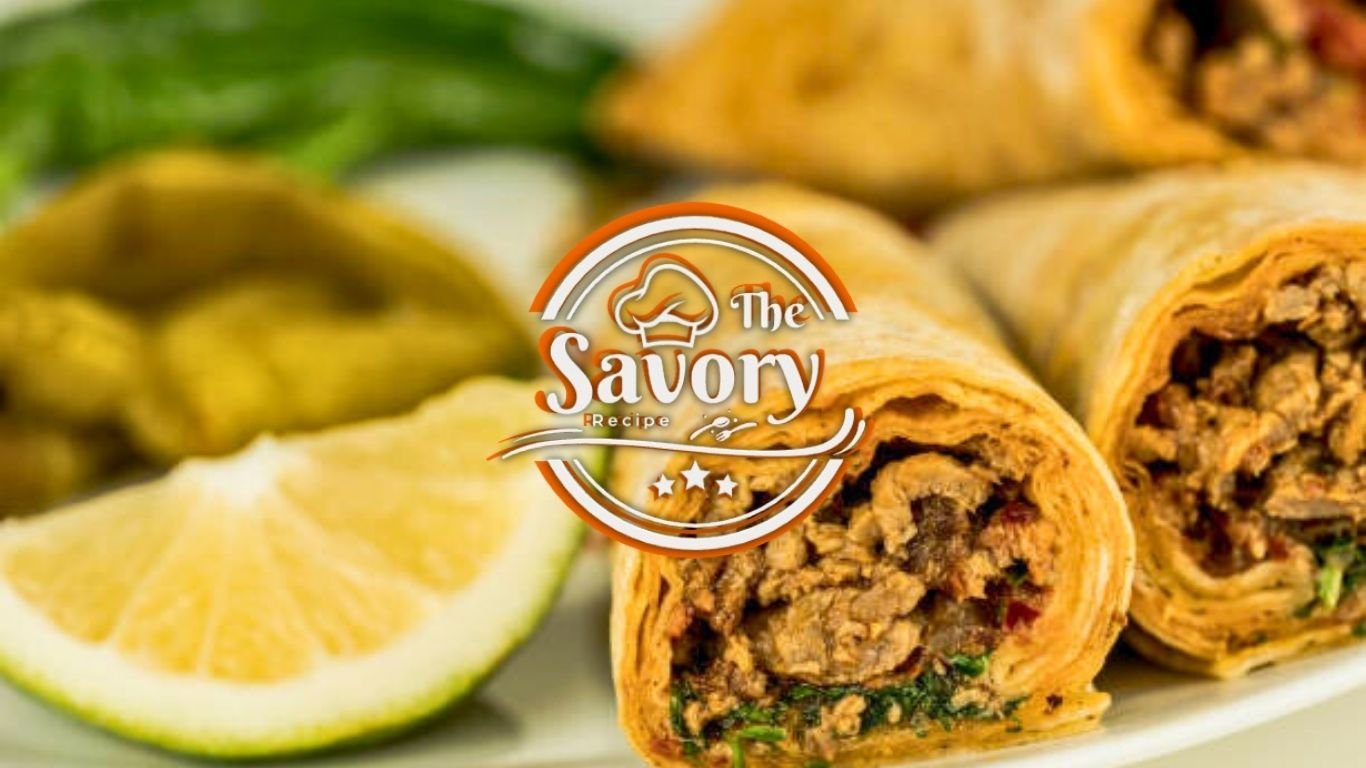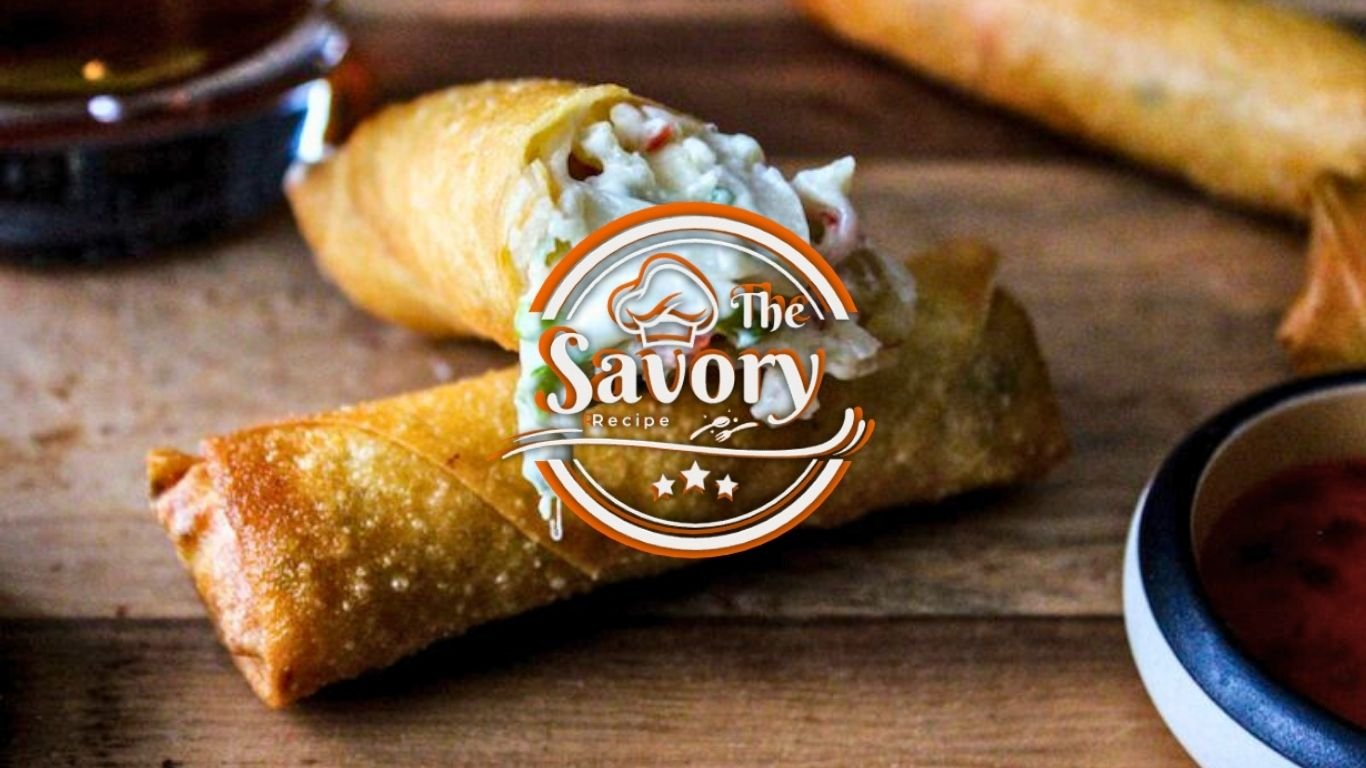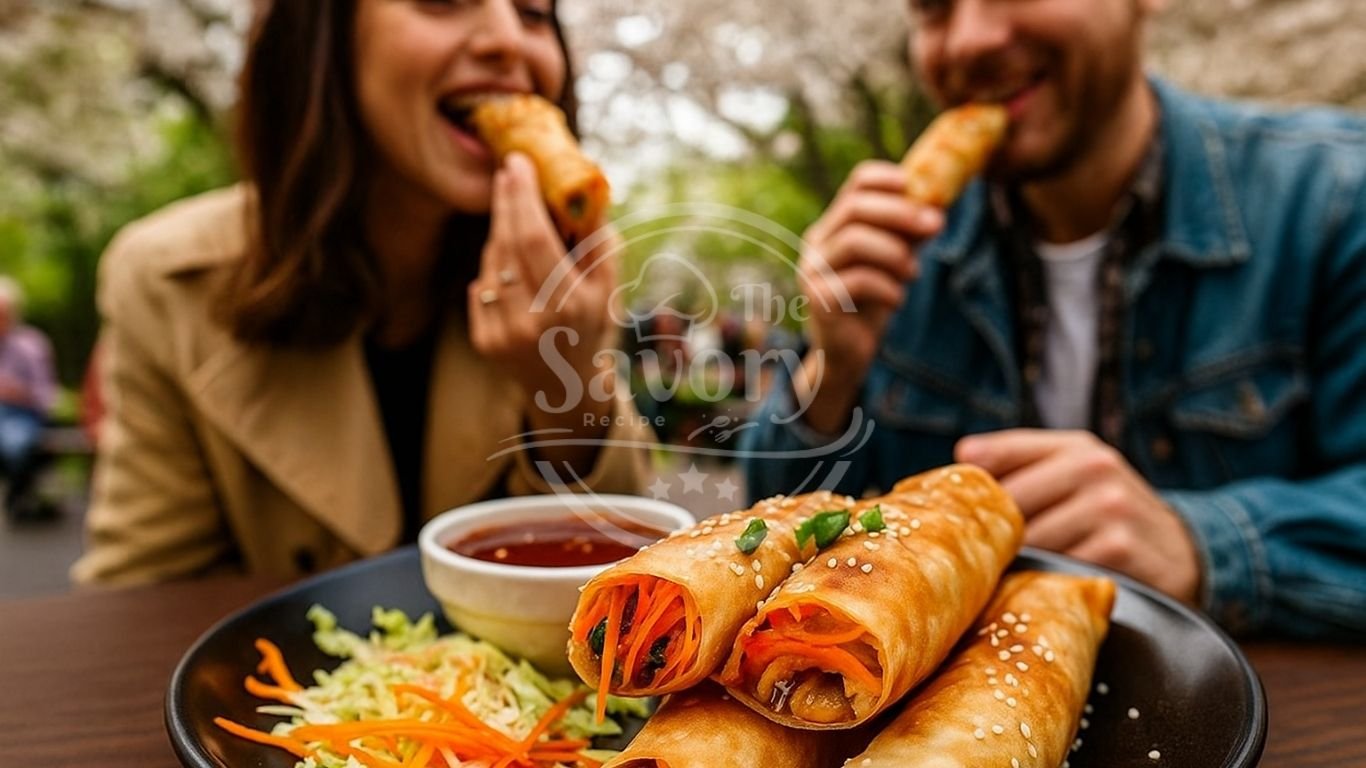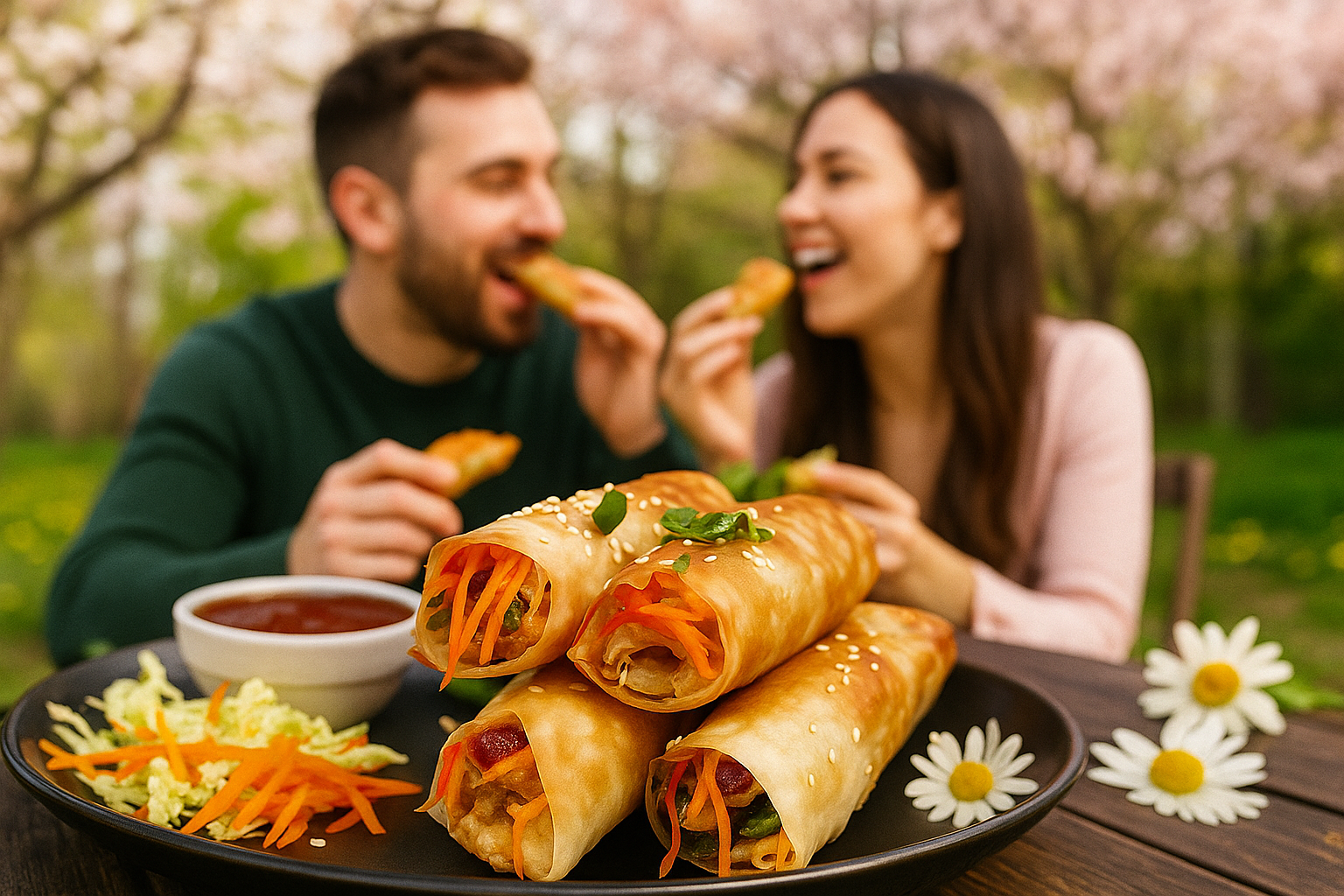
The Ultimate Guide to Fresh Spring Rolls: Healthy, Vibrant & Flavor-Packed
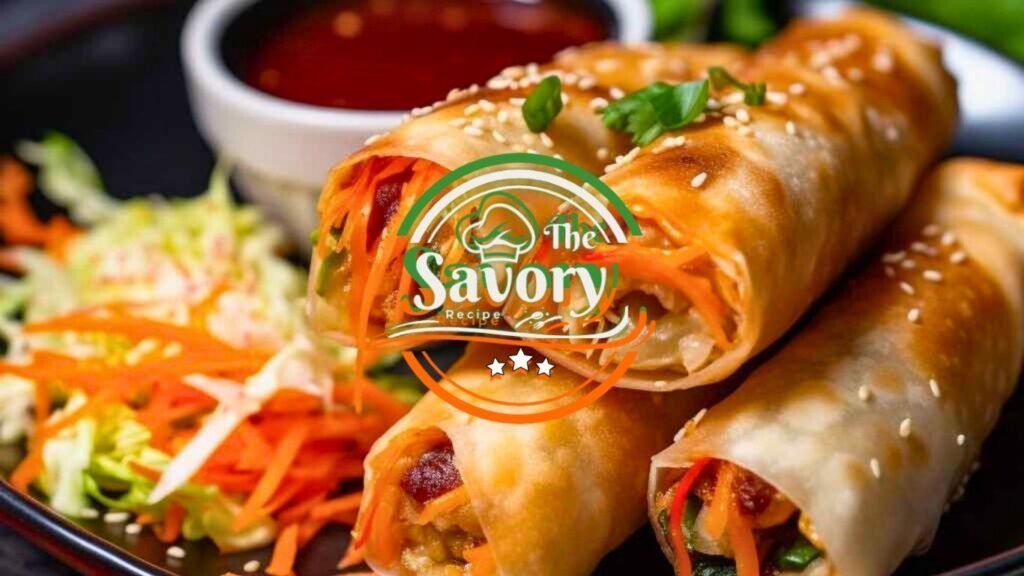
Introduction to the World of Fresh Spring Rolls
Fresh spring rolls (also called summer rolls or Gỏi cuốn) are one of the most refreshing, nutritious, and versatile dishes in Asian cuisine. Unlike their fried counterparts, these translucent rice paper rolls are packed with fresh vegetables, herbs, and protein making them a perfect light meal or appetizer for any occasion.
In this Fresh spring rolls comprehensive guide, we’ll explore:
✔ The fascinating history and cultural significance of fresh spring rolls
✔ Complete step-by-step instructions for making perfect rolls every time
✔ 5 delicious filling combinations (traditional and creative variations)
✔ 6 amazing dipping sauces to elevate your rolls
✔ Expert tips and troubleshooting for rice paper success
✔ Meal prep and storage solutions
✔ Nutritional benefits and dietary adaptations
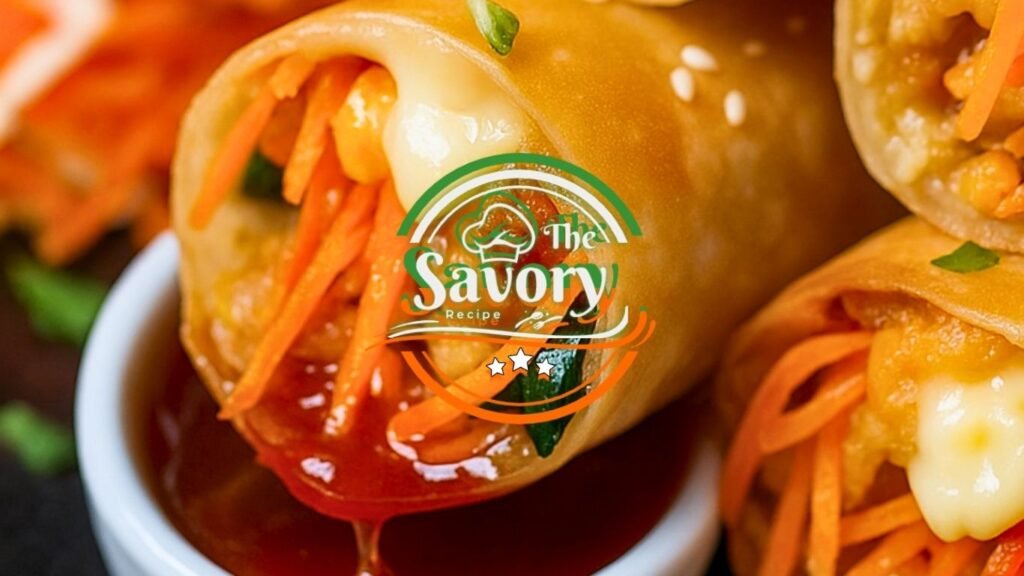
Chapter 1: The History and Cultural Significance of Fresh Spring Rolls
Origins in Vietnamese Cuisine
Fresh spring rolls, known as Gỏi cuốn in Vietnamese, originated in Southern Vietnam. Unlike fried spring rolls (Chả giò), these fresh versions were created as a lighter, healthier alternative that showcased the abundance of fresh herbs and vegetables available in Vietnam’s tropical climate.
The dish became particularly popular in the 20th century as Vietnamese cuisine spread globally. Today, they’re a staple in Vietnamese restaurants worldwide and have been adapted into countless variations.
Symbolism and Tradition
In Vietnamese culture, the translucent rice paper represents purity and clarity. The act of wrapping ingredients together symbolizes unity and harmony making these rolls popular for family gatherings and celebrations like Tết (Lunar New Year).
Global Variations
While Vietnamese-style remains the most popular, other cultures have created their own versions:
- Thai Poh Pia Sod: Often includes minced pork and sweet radish
- Chinese Run Bing: Uses wheat flour wrappers instead of rice paper
- Filipino Lumpiang Sariwa: Features a peanut-based sauce
Chapter 2: Essential Ingredients and Equipment
Core Components
- Rice Paper Wrappers (Bánh tráng)
- Look for 22cm diameter rounds
- Choose brands with minimal additives
- Protein Options:
- Shrimp (traditional)
- Tofu (vegetarian)
- Chicken
- Crab
- Vermicelli Noodles:
- Thin rice noodles (bún)
- Soak in hot water for 5 minutes then drain
- Fresh Vegetables:
- Lettuce (butter or romaine)
- Cucumber (julienned)
- Carrots (julienned)
- Bean sprouts
- Herbs (critical for authentic flavor):
- Mint
- Thai basil
- Cilantro
- Perilla leaves (optional)
Special Equipment
- Large shallow bowl for soaking rice paper
- Damp kitchen towel for workspace
- Sharp knife for precise cutting
- Bamboo mat (optional for neat rolling)
Chapter 3: Step-by-Step Guide to Perfect Spring Rolls
Step-by-Step Puff Pastry Recipe
Preparation (15 minutes)
- Prep all ingredients:
- Cook proteins and slice thinly
- Julienne vegetables (matchstick size)
- Wash and dry herbs
- Prepare noodles
- Set up workstation:
- Arrange ingredients assembly-line style
- Fill bowl with warm water (not hot)
- Place damp towel on work surface
Rolling Technique (Master Method)
- Soak rice paper for 5-7 seconds until pliable but still slightly firm
- Lay on damp towel and pat gently to remove excess water
- Layer ingredients near bottom third:
- Lettuce first (protects wrapper)
- Then noodles, protein, vegetables, herbs
- Fold sides inward, then roll tightly from the bottom
- Seam side down to prevent unrolling
Pro Tip: Practice makes perfect! First few may be messy but you’ll quickly improve.
Chapter 4: 5 Delicious Filling Combinations
1. Traditional Vietnamese
- Shrimp (butterflied)
- Rice vermicelli
- Mint, cilantro, lettuce
2. Vegetarian Rainbow
- Marinated tofu
- Purple cabbage
- Avocado
- Mango slices
- Basil and mint
3. Thai-Inspired
- Grilled chicken
- Shredded green papaya
- Peanuts
- Thai basil
4. Keto/Low-Carb
- Sliced beef
- Zucchini noodles
- Microgreens
- Sesame seeds
5. Fusion California
- Crab meat
- Asparagus
- Cream cheese
- Dill
Chapter 5: Dipping Sauces That Elevate Your Rolls
1. Classic Peanut Hoisin
- 3 tbsp peanut butter
- 1 tbsp hoisin
- 1 tsp sriracha
- Water to thin
2. Nuoc Cham (Traditional Vietnamese)
- 3 tbsp fish sauce
- 2 tbsp lime juice
- 1 tbsp sugar
- Garlic and chili
3. Sweet Chili
- Store-bought or homemade
4. Ginger-Soy
- Soy sauce
- Rice vinegar
- Fresh ginger
- Sesame oil
5. Avocado Lime Crema
- Ripe avocado
- Greek yogurt
- Lime zest
- Cilantro
6. Spicy Miso
- White miso
- Chili oil
- Honey
- Rice vinegar
Chapter 5: Dipping Sauces That Elevate Your Rolls
Rice Paper Problems Solved
- Sticking together? Keep separated with damp paper towels
- Tearing? Don’t oversoak – just until pliable
- Too chewy? Use warmer water for soaking
Presentation Perfection
- Showcase ingredients by placing colorful items near wrapper edge
- Uniform size makes for beautiful plating
- Garnish plate with herb sprigs and sauce designs
Meal Prep and Storage
- Best served fresh
- Can refrigerate for 4 hours (wrap in damp paper towel)
- Do not freeze – texture will suffer
- Prep ingredients ahead and assemble when needed
Chapter 7: Nutritional Benefits and Dietary Adaptations
Health Advantages
- Low calorie: About 100-150 calories per roll
- High fiber from vegetables and rice noodles
- Lean protein options
- Gluten-free when using rice paper and tamari
Dietary Modifications
- Vegan: Use tofu and mushroom-based fish sauce
- Paleo: Substitute noodles with spiralized vegetables
- Nut-free: Sunflower seed butter instead of peanut sauce
Chapter 8: Serving Suggestions and Pairings
Perfect Occasions
- Light summer lunches
- Appetizer for Asian-inspired dinners
- Healthy party finger food
- Meal prep lunches
Recommended Pairings
- Vietnamese iced coffee
- Green tea with mint
- Grape juice
- Sparkling water with lime
Conclusion: Why This Recipe Works
- Perfect Rice Paper Hydration – Brief soaking creates pliable yet sturdy wrappers.
- Layered Flavor Balance – Fresh herbs, savory protein, and tangy sauce complement each other.
- Smart Ingredient Order – Lettuce protects the wrapper, while noodles add structure.
- Easy Assembly Technique – Tight rolling ensures neat, mess-free results.
- Versatile & Adaptable – Endless filling and sauce options for every diet.
Final Thoughts
Fresh spring rolls are more than just food they’re an experience. The combination of textures (crisp, soft, chewy), temperatures (cool fillings with warm wrapper), and flavors (savory, herbal, sweet, spicy) creates something truly special.
What makes them truly remarkable is their versatility. They can be:
- A quick weekday lunch
- An impressive dinner party appetizer
- A healthy snack
- A creative culinary project
The key to success is:
- Quality ingredients
- Proper preparation
- Confident rolling technique
Now that you’re equipped with this comprehensive knowledge, you’re ready to create spring roll masterpieces. Remember even imperfect rolls taste delicious, so have fun with the process!

